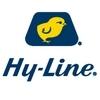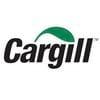Evaluating phenotypic correlations between internal and external egg quality indicators of Hy-Line Brown laying hens at 35 weeks of age
Published: May 20, 2025
Source : Elijah Oketch 1, Myunghwan Yu 1, Shan Nawarathne 1, Nuwan Chaturanga 1, Jeseok Lee 1, Haeeun Park 1, Jung Min Heo 1,* / 1 Department of Animal Science and Biotechnology, Chungnam National University, Daejeon 34134, Korea.
Increased global production, and consumption of the hen egg; and the popularization of nutritional knowledge, places greater emphasis on egg quality, safety, and freshness. An understanding of the interaction between several egg quality indicators is necessary. A total of 300 freshly-laid eggs were analyzed within 24 hours of collection to investigate the phenotypic correlations between internal and external quality indicators.
Eggs were analyzed for egg weight, breaking strength, shell color, albumen height, Haugh unit, yolk color, specific gravity, shell weight, shell percentage, and shell thickness at the blunt, equator, and sharp ends. Collected data was analyzed for Pearson’s correlation coefficients and statistical significance was estimated at p < 0.05. Low positive correlations were observed between egg weight and shell weight (r=0.336, p < 0.01). Moderate negative correlations were found between egg weight and shell percentage (r=-0.504, p < 0.01).
While very strong positive correlations were found between Haugh units and albumen height (r=0.949, p < 0.01), both parameters were not distinctly correlated to other quality indicators. Similarly, there were no significant correlations between egg yolk color and shell color to other quality indicators. While moderate positive correlations were observed between eggshell weight and shell percentage (r=0.631, p < 0.01), both parameters were lowly correlated to the eggshell thickness and not distinctly correlated to the egg-breaking strength. High positive correlations were observed between the overall eggshell thickness and the measurements at the blunt, middle, and sharp edges (r=0.975, r=0.965, r=0.923). Low positive correlations were observed between breaking strength and the overall, blunt edge, middle edge, and sharp edge eggshell thickness (r=0.465 r=0.447, r=0.428, r=0.453).
Conclusively, no marked correlations were established between the eggshell and the internal egg quality indicators. This study contributes to understanding the relationship between shell quality and internal egg freshness, providing insights for optimizing laying hen production and egg quality assessment systems.
Key words: albumen, correlation, egg quality, laying hen, eggshell.
Abstract published in Journal of Animal Sci Technol. pISSN: 2672-0191, eISSN: 2055-0391. DOI: https://doi.org/10.5187/jast.2025.e24. This is an Open-Access article distributed under the terms of the Creative Commons Attribution Non-Commercial License (http://creativecommons.org/licenses/by-nc/4.0/)
Related topics:
Mentioned in this news release:


Recommend
Comment
Share

Would you like to discuss another topic? Create a new post to engage with experts in the community.














